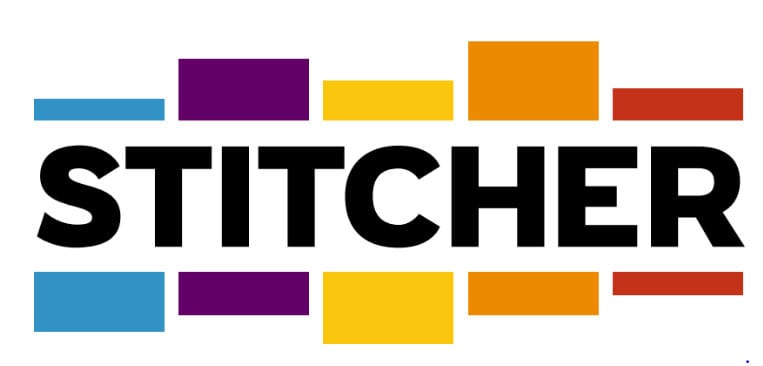I grew up in one of the first yoga studios in Canada. I remember a time before Lululemon, and before Walmart carried yoga mats, but my practice really began at the same time that yoga was exploding in the west. I’ve heard stories of teachers sharing their knowledge with two students at a time in their living room, for no reason other than their admiration for the multi-limbed practice, but this was never my experience. I grew up with 50 people in classes, with loud electronic music, or the primary series in the early morning, or sometimes both combined.
I taught classes for a decade, starting at age 18, and somewhere in there I realized that my practice wasn’t helping me as much as it used to. I had lower back pain, my knees made weird painful sounds as I cranked my legs into a predetermined sequence of poses, I knew something had to change.
I started going to the gym and my whole world expanded, I worked with a man named Lovedeep Dhunna very closely for a few years, he became my mentor. My relationship with LD was highly valuable, and confusing. He was a personal trainer, but what he was teaching me felt more like yoga than anything I had practiced before. He taught me exercises and lifts that supported me in a way that I had never experienced before. He recommended I listen to my body rather than following a specific diet. A lot of what he taught almost went against what I had previously learned about the body, but it felt so right. This was the first time I started to wonder if what I was practicing and teaching was yoga.
When given the chance to interview Tejal Patel and Jesal Parikh from the Yoga Is Dead Podcast I was excited to get into some of the deeper meanings of yoga, and talk about whether or not it really is dead. (click here to listen to our conversation when you have a minute)
Kathryn: “How do you define yoga, Jesal do you want to start?”
Jesal: “I define yoga as something that brings mindfulness and self awareness, whether that is a practice such as asana, or whether that’s having a fight in a relationship and working out who you are, and why you are having this fight to me that’s yoga.”
Kathryn: “Tejal, do you agree and do you want to add something else?”
Tejal: “I definitely agree with that, and my definition of mindfulness comes from an organization I work with called The Lineage Project and they define mindfulness as kind awareness, not just moving with awareness but kind awareness, cultivating that kind awareness. And I think because we all know yoga means union and union could be to anything, that’s kind of the key, it’s a way of life that cultivates kind awareness or mindfulness of your relationship to yourself and to all living things, your surroundings at all times.”
When I hear these responses I’m reminded of what yoga is. It’s not a sequence of poses, it’s a way of being in the world. Sounds good right? This leads me to my next thought, am I teaching yoga? This is where things get sticky for me.
I now know that I was teaching a version of modern postural vinyasa yoga, but was I teaching yoga, and what is the difference? Is there a difference?
A few weeks ago I released a podcast with Dr. Rima Thapar, an MD from Ontario who described the yoga she grew up practicing with her Indian father. Rima talked about her family practice which consisted of some joint mobilization warm-ups, breath work and meditation. I asked her how she felt when she first started attending Vinyasa yoga classes in Toronto, this was her response. “I remember walking into my first class and thinking, what is going on? Like oh, ok we are dancing on the mat, alright let’s move fast. That was my first experience and I felt the studio space itself was very life changing for me and I felt that, but the practice was very different from my own.” When I asked her if she had ever wondered if this type of class was a yoga practice she replied “All the time, from day one.”
This makes me think, who is deciding what yoga is?
In episode four of Yoga Is Dead while commenting on Vinyasa yoga, Tejal says “You can practice yoga every day without practicing a single asana, and I think people forget that when they post #yogaeverydamnday videos on Instagram.”
Right, it’s not about the poses and sequences. Yoga practice can include poses, exercises and movements, but it’s not limited to these physical manipulations, and no two people have to perform the physical element of yoga in the same way.
So what did I teach growing up and how do I feel about it now?
Until I was around 24 years old I taught the modern postural yoga I had learned, the sun salutations, standing poses, handstands, backbends and seated poses. I didn’t ask too many questions about the movements, I followed the template. I said a few Sanskrit words, poorly, maybe even chanted a few times (definitely not really understanding what I was saying). I walked around the room giving the adjustments I had learned in YTT, without asking for consent or having a deep understanding of my students needs. Teaching felt good, I started so young that my teaching developed quickly as I did.
Was this yoga?
Did I have a positive impact on many people’s lives? Yes, absolutely, there were some really good things in there. And, is teaching a practice that has been appropriated harmful? Yes, and can we cause harm even if we only have good intensions? Yes, I think this is the biggest yes of all, and sometimes the scariest.
In my interview with Tejal and Jesal we talk about a couple examples of cultural appropriation, but before we get to that I want to let Jesal define cultural appropriation so we are all on the same page. “When I talk about cultural appropriation I always say the first thing you need to know is that when we are talking about appropriation, we are talking about a power imbalance. So when we talk about the white majority dominant culture we are talking about a culture with all the power and then we are talking about another culture that doesn’t have as much power. In our case the Indian culture was colonized, and even though colonization ended, that power dynamic didn’t just go from 100 to zero, there is still some form of colonization happening. When we talk about appropriation we talk about the dominant culture taking something from the non dominant culture without context, without permission, and then doing whatever they want with it without respect to the actual culture that it came from.”
I think it’s a really good idea to take a moment and just consider ways in which we have appropriated rather than appreciated yoga. I once heard someone say (I think it was jamilah malika, but I can’t say for sure) “The question is not IF we appropriating yoga, it’s about looking at HOW we are appropriating yoga.” How are dominant culture folks taking practices from a non dominant culture, using them out of context, and not really understanding or honouring their origins. And HOW can we do better? I have some ideas about this at the end of this blog, and this is personal to all of us.
A couple of months ago Susanna Barkataki and Rina Desphande released a video and blog on using the word namaste at the end of a yoga class, and whether or not it is appropriate. Namaste is the word that I’m sure many of us were taught to use at the end of a class, as a closing message. I love this video because they speak about the sacredness of namaste, and how it’s not something to be printed on a t-shirt about staying in bed or slaying. It reminded me that there is a rich history behind this practice, and the words we use. It also reminded me how much I don’t know, and how little attempt I’ve made to learn.
The conversation about postural yoga today is really different than when I grew up teaching. It’s less about alignment and perfection and more about preparation and accessibility. The focus has shifted towards learning more about exercise science and blending biomechanics and progressive strengthening with the poses we love.
Alongside all of this great movement is the conversation about yoga injuries, which I’ve personally participated in heavily. My narrative is always evolving, and the way I speak about the practice has shifted quite a bit. When I used to say “I was injured practicing yoga” what did I really mean? I definitely didn’t mean I injured myself in my spiritual practice of unity, kind awareness and mindfulness.
I think what I meant was “I became injured while practicing westernized modern postural yoga as fitness in isolation of all other forms of movement, thinking I was going deeper into a spiritual state, but was perhaps bypassing my interoception, reality, and needs for balance.” What version of yoga was I practicing and what version was I teaching and modelling for others?
I really loved the way Tejal and Jesal defined yoga, and there are many other definitions out there. I would love for others to share their own thoughts on this. These conversations make me consider other ways in which I can be practicing yoga, here are a few things that came to mind for me, and know that I’m always reworking these ideas as my awareness grows.
Continue creating connections with the people in my classes, get to know them, so that I can help them find a version of the physical practice that works for them.
Have challenging conversations, like this one, and question what I’m practicing and teaching.
Talk to people out loud about what I’m learning about, even though it feels vulnerable.
Don’t only talk to other white folks about what yoga is, platform more south asian voices.
Notice the elements of yoga that don’t have anything to do with physical movements.
Learn more about the origins and other limbs of the yoga practice, from more than one book or perspective.
People in my workshops ask me all the time whether or not I consider what I teach to be yoga. I usually dodge, in fear of saying the wrong thing, but I’ve asked myself this question many times over.
I feel that today with all that I’ve learned, my work helps bring people to a more mindful state where they feel strong and capable of moving through the world. My classes are about feeling strong and noticing how developing strength in a class might trickle out into life. To me this feels more like yoga than anything I’ve ever been involved in. It might not look like the version of yoga I grew up with, but it feels more like the heart of yoga I’ve learned about since then.




